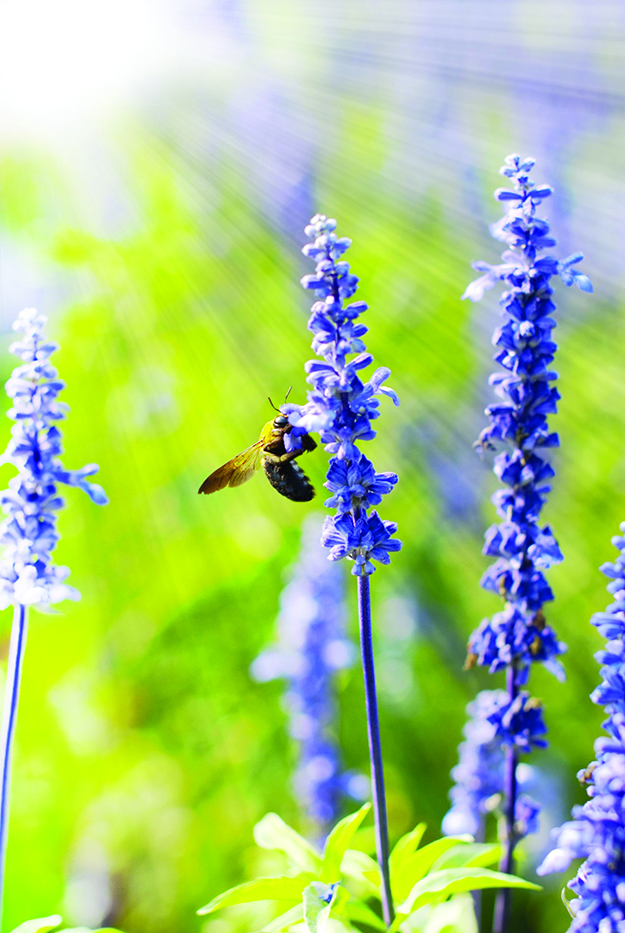By Erin Hitchcock –
The devastation happening to our world is scary to say the least, but we mustn’t allow ourselves to become overwhelmed by the darkness when so many others are working to illuminate it.

People all over the world are pooling together to heal our planet, be it Greta Thunberg and the Fridays4Future movement that has led to millions of people calling for climate justice, or the individual seeking out ways to have a smaller footprint. Finding examples of hope in action helps propel us forward in creating the peaceful and healthy future we want for this world. This column is about focusing on examples of changes for good happening all around us.
I was fortunate to be present at World Religion Day in January in Williams Lake, which was held to support unity across all religions. Spiritual representatives from the Sikh, Christian, Bahai, Muslim, First Nations, and Buddhism communities all shared their prayers for peace, love, and healing for us all. This coming together of faiths was so moving, as it showed how we can all put aside our so-called differences, as we all share the same moral commonalities and are part of the same sentient family.
This is perhaps one of the most important things we can do as individuals, because peace won’t come on its own. So, a first example of good news for change is to strive to practice peace and kindness every day. As Charles Eisenstein says in his new book, Climate: A New Story, we need to “expand the circle of compassion to include every being on this earth.”
Springtime is the perfect time to witness the unity and symbiosis nature practices every day. We can help by giving back with extra compassion for ourselves and for the rest of Earth.
Actor, producer, and philanthropist Morgan Freeman recently converted his 124-acre ranch into a bee sanctuary to help the bees, which are in danger due to many factors including habitat loss, colony collapse disorder, and pesticides.
While we don’t all have the land or the means to do what Freeman has done, we can still help the bees and other pollinators by creating pockets of habitat and food for them where we can, and by reducing or eliminating foods and products that contain chemicals such as glyphosate.
If you don’t already have a garden, consider planting one, even a small box or some pots if you lack space, and include flowers when planting—pollinators especially love lavender, bee balm, fireweed, dandelions, and many others. You can also set up bird feeders or (properly made) bee houses. I purchased a beautiful, well-crafted bee house made locally in Quesnel by Pause to Feather Creations. And remember, when feeding the hummingbirds, to make your own solution using sugar and water, rather than the solutions made with red dyes, which are actually poisonous to the birds we are trying to help. (I also found a neat little post about re-purposing chipped tea pots by hanging them up to provide shelter for birds. It is always best to repurpose something you already have rather than to buy new).
Another way to help the birds and other wildlife is to reduce your use of plastics, which can kill birds and wildlife if ingested and also contribute to climate change when they’re produced.
The Ocean Cleanup Project is also providing hope after capturing and removing plastic, including micro-plastics, from the Great Pacific Garbage Patch, with its huge, plastic capturing floating device. The Dutch non-profit is set to deploy more devices to the mouths of the most polluted rivers to stop many of the plastics from entering the oceans.
The City of Williams Lake is still working on plans to ban single-use plastics in the city, and the provincial and federal governments are also working on legislation to ban certain plastic items.
But we shouldn’t wait for the laws to change. Avoid plastic whenever and wherever you can. Remember your reusables: coffee mugs, water bottles, metal straws, take-out containers. One of the best ways to prevent the Earth from choking on plastics is to not use them at all. Recycling is great but reducing or eliminating is key.
Finally, trees. CBC reported there are plans to plant 310 million trees this year alone in BC, in response to the mountain pine beetle, forest fires, and climate change. Most of the trees will be planted in the Central Interior, Cariboo-Chilcotin, and East Kootenay regions.
Countries including Ethiopia, Scotland, and India, among others, have also been taking similar initiatives.
Each one of us can do our part for the planet, shaping a better future by how we choose to live and give back so we can contribute to a healthier planet for all. -GG
Erin Hitchcock is a stay-at-home mom, environmental activist, and member of the Cariboo-Chilcotin Pachamama Alliance and the Williams Lake Climate Action Coalition.

